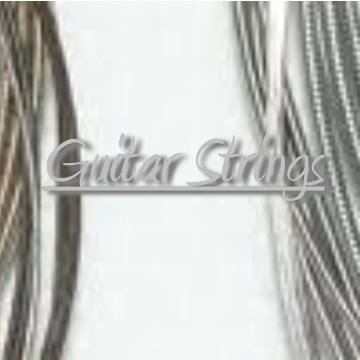Free Online Guitar Lessons

Choosing guitar strings is a very important decision. After all, this is the junction between your hands and your instrument.
Guitar strings come in two forms: unwound (plain) or wound.
Unwound strings are your High E (1st), B (2nd) and G (3rd) strings*. These are a solid strand of metal and they feel smooth to the touch. Unwound strings are suited for higher pitches.
Wound strings are your Low E (6th), A (5th) and D (4th). They are plain strings with metal wrapped around them to produce lower pitches. You can see the difference between wound and unwound, or simply slide the edge of your pick against the strings. Wound strings will produce a jagged, scraping sound.
IIIIIIIIIIIIIIIIIIIIIIIIIIIIIIIIIIIIIIIIIIIIIIIIIIIIIIIIIIIIIIIIIIIIIIIIII
(*Occasionally you might encounter a guitar with a wound G (3rd) string. This is a throwback to the early days of electric guitar when wound G’s were the only type available. )
Modern guitar strings offer many options– composition, string gauge, round wound/flat wound and coated/non-coated.
Composition-
For electric guitar, the most common string materials are stainless steel and nickel.
Stainless steel strings have great volume, tone and sustain. They’re also the brightest sounding. Given its magnetic properties, it’s a good match for electric pickups. Stainless steel is also very resistant to corrosion, much more so than nickel. These are a fine choice, but some players believe they feel a little “stiffer” than other strings.
Nickel-plated strings are essentially stainless steel strings with a light plating of nickel. The plating makes them feel less stiff than pure stainless steel and also takes away some of the brightness. Nickel is also a smoother surface so they produce less “whisper” ( string noise). These are probably the most common type of electric strings.
Pure Nickel strings are another popular choice. They are less bright than stainless steel and nickel plated strings and they also have more “give” to them.
String gauges-
String gauges are another option to consider. Sets are usually referred to by the size of their thinnest strings. These can vary from very light (8’s) to heavy (12 or higher). Some common string gauges are: 9-42, 9-46, 10-46, 10-52.
***It’s important to understand that the higher gauges are more difficult to bend on. Their additional mass makes them difficult to budge at concert pitch. Higher string gauges are usually preferred by rhythm guitarists and “doom and gloom” metal heads that tune their guitars WAY down. Drop tuners need additional mass to make the strings sound fuller. (A set of 8’s tuned down to Drop C feel like cobwebs and sound about as heavy.)
Round wound/flat wound-
We’ve already learned that a wound string is nothing more than a plain string with windings around it. They are also known as Round wound strings.
Flat wound strings are Round wounds that have the windings ground down to have less of a serrated feel. They produce a mellower tone and are most commonly used by Jazz guitarists and bass players.
Coated/non-coated
Non coated strings are any of the strings mentioned above. They are wound or unwound lengths of plain metal. But since strings are subject to breakage and tuning issues due to body oils and dirt, several companies offer an additional option of “coating” each string in the hopes of prolonging string life. Manufacturers claim that string life can be doubled or even tripled-but then again the prices of coated strings reflect this.
*I like to get my “bend” on, so I prefer light gauge strings.
